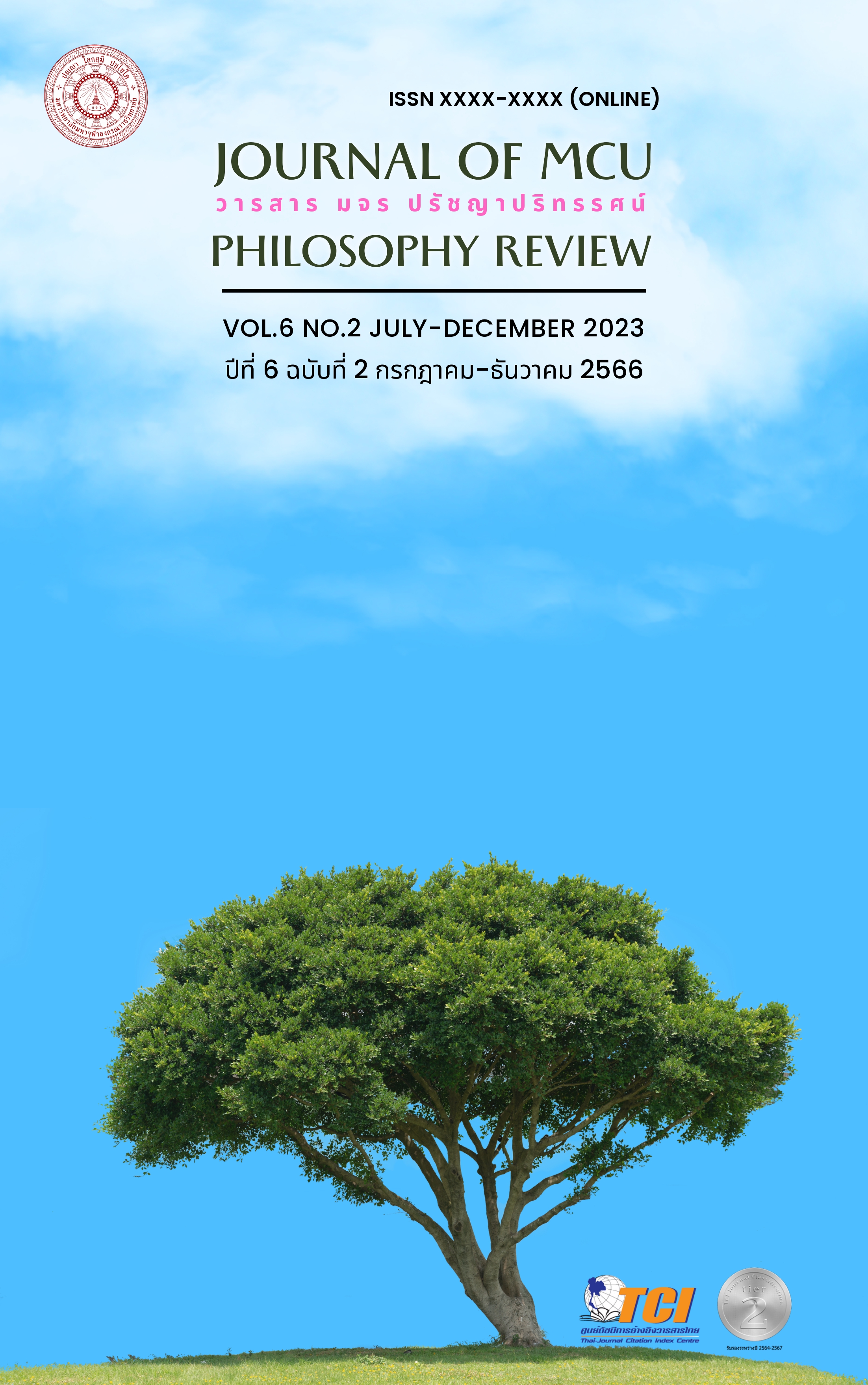A study of Upãsakahood Whose Foremost (Etadagga) was Endorsed in Caṇḍãla Sutta
Main Article Content
Abstract
This article was purposely made: 1) to study Upāsakahood whose Etadagga was given in the Tripitaka, 2) to study Upāsakahood whose Etadagga was given by Caṇḍāla Sutta, and 3) to analyze the causes giving rise to Upāsakahood according to the Caṇḍāla Sutta. This study employed qualitative research methodology done by studying related documentaries. The results of the research were found that: 1) there are 10 Upāsakas whose Etadagga had been praised as being excellent in some special way by the Buddha and only one had been appointed in accordance with four reasons: 1) the occurrence of the matter, 2) the precedence, 3) the specialization, and 4) possession of a great quality. 2) The Caṇḍāla Sutta is the one that discusses the qualities of two-sided or two-fold Upāsaka, namely, Caṇḍāla Upāsaka or those who are undesirable in the organization of Buddhism by which the quality of being Upāsakahood in Buddhism could be decreased without getting any progress wherein the Buddha gave the opposite principle in the same sutta, that is, an excellent Upāsaka who could become the role model for other accordingly. 3) The results of the analysis of Upāsakahood whose Etadagga was given according to the principles of Upāsaka in the Caṇḍāla Sutta were found that the 10 Upāsakas could be met with the criteria for an untouchable Upāsaka Caṇḍāla, but all 10 Upāsaka could be met with the criteria of excellent Upāsakas consisting of: 1) being a believer, 2) being a moral person, 3) being a person who does not believe in auspicious news, believing in karma not in auspiciousness, 4) a person does not seek to receive blessings outside of this religion, 5) one who makes a contribution in this religion first because those Upāsakas who listen to the Buddha's sermons leading to becoming a noble person where wisdom could be actualized to see the world of Dhamma clearly. Here seven Upāsakas got Sotāpanna stage and three Anāgāmī stage.
Article Details

This work is licensed under a Creative Commons Attribution-NonCommercial-NoDerivatives 4.0 International License.
บทความที่ได้รับการตีพิมพ์เป็นลิขสิทธิ์ของวารสาร มจร ปรัชญาปริทรรศน์
ข้อความในบทความที่ได้รับการตีพิมพ์ในวารสาร ถือเป็นความรับผิดชอบของผู้เขียนบทความ และข้อคิดเห็นนั้นไม่ถือว่าเป็นทัศนะและความรับผิดชอบของกองบรรณาธิการวารสาร มจร ปรัชญาปริทรรศน์
References
ภัสสรา มณฑนาธรรม. (2565). การพัฒนาคุณภาพชีวิตในสังคมพหุวัฒนธรรมด้วยหลักนาถกรณธรรม. วารสารวิชาการสถาบันพัฒนาพระวิทยากร, 5(4), หน้า 198-210.
มหาจุฬาลงกรณราชวิทยาลัย.(2539). พระไตรปิฎกภาษาไทย ฉบับมหาจุฬาลงกรณราชวิทยาลัย. กรุงเทพมหานคร: โรงพิมพ์มหาจุฬาลงกรณราชวิทยาลัย.
มหาจุฬาลงกรณราชวิทยาลัย.(2557). อรรถกถาพระไตรปิฎกภาษาไทย ฉบับมหาจุฬาลงกรณราชวิทยาลัย. กรุงเทพมหานคร: โรงพิมพ์มหาจุฬาลงกรณราชวิทยาลัย.
พระพรหมคุณาภรณ์ (ป.อ. ปยุตฺโต). (2551). พจนานุกรมพุทธศาสน์ ฉบับประมวลศัพท์. พิมพ์ครั้งที่ 32. กรุงเทพมหานคร: บริษัท เอส. อาร์. พริ้นติ้ง แมส โปรดักส์ จากัด.
พระพรหมคุณาภรณ์ (ป. อ. ปยุตฺโต). (2557). ธรรมนูญชีวิต พุทธจริยธรรมเพื่อชีวิตที่ดีงาม. กรุงเทพมหานคร: สำนักพิมพ์ ธรรมสภา.
สมเด็จพระพุทธโฆษาจารย์ (ป. อ. ปยุตฺโต). (2560). พุทธธรรม ฉบับปรับขยาย. พิมพ์ครั้งที่ 57. กรุงเทพมหานคร: สำนักพิมพ์ผลิธัมม์.
พรชัย เจริญดำรงเกียรติ. (2559). ทาน ศีล ภาวนา ในพระไตรปิฎก. กรุงเทพมหานคร: สำนักพิมพ์อมรินทร์ธรรมะ.
พระครูสมุห์อิ่นแก้ว สุขวฑฺฒโน (ใจโส). (2555). “การศึกษาวิเคราะห์การบรรลุธรรมของอุบาสกผู้ได้รับเอตทัคคะ”, วิทยานิพนธ์ตามหลักสูตรปริญญาพุทธศาสตรมหาบัณฑิต สาขาวิชาพระพุทธศาสนา. บัณฑิตวิทยาลัย: มหาวิทยาลัยมหาจุฬาลงกรณราชวิทยาลัย.
อำพล บุดดาสาร, วัชระ งามจิตรเจริญ. (2562). รูปแบบการประยุกต์หลักมงคลชีวิต 38 ประการเพื่อการดำเนินชีวิตในสังคมไทย. วารสารพุทธศาสน์ศึกษา จุฬาลงกรณ์มหาววิทยยาลัย, 26(3), หน้า 1-32.
พระครูวิบูลศีลพรต อาสโภ. (2557). การศึกษาบทบาทชาวพุทธแบบอย่าง : กรณีศึกษาบทบาทของ อนาถบิณฑิกเศรษฐีกับนางวิสาขามหาอุบาสิกา. วารสารวนัมฎองแหรกพุทธศาสตรปริทรรศน์, 1(1) , หน้า 115-123.


